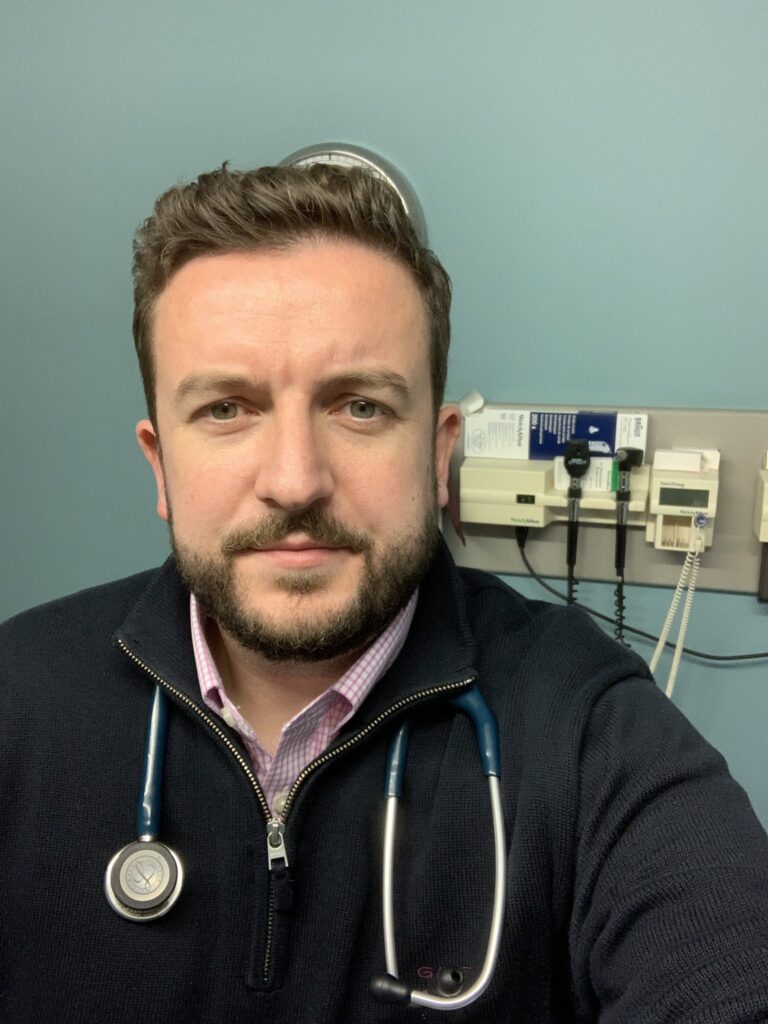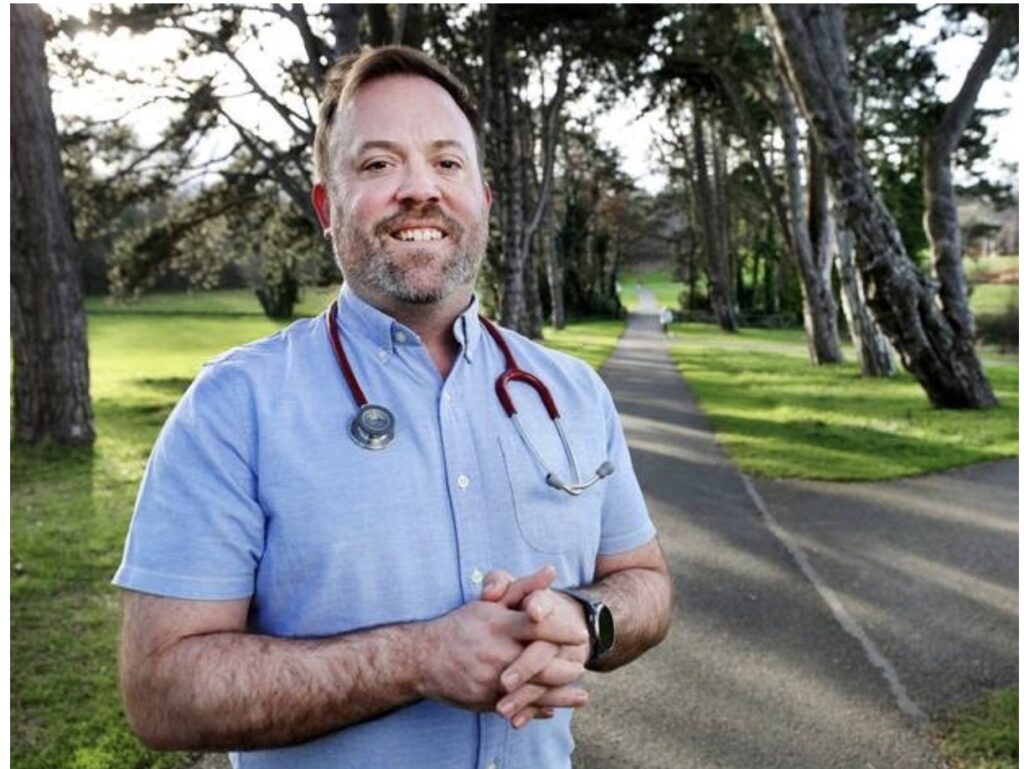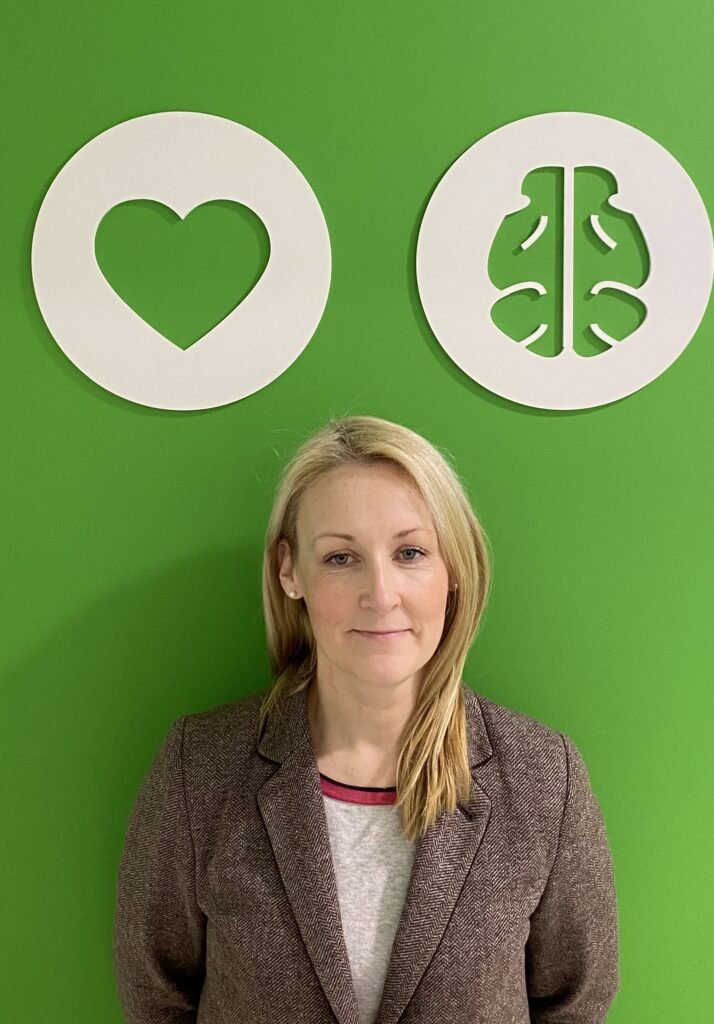In the second of our series on IT in healthcare, Niamh Cahill reports on how general practice has innovated in response
to the Covid-19 crisis and why many of these changes will last beyond the pandemic
The Covid-19 pandemic has forced healthcare professionals to adapt and innovate in ways never before imagined.
In March 2020, as virus cases surged and uncertainty prevailed, healthcare workers feared services would be overwhelmed. In such instances, urgency can breed innovation and this was the case in general practice. The pressing need to safeguard services directly resulted in innovations, many of which will last beyond the current crisis.
One of the first such innovations took place in March last year. The week before St Patrick’s Day, Dublin GP Dr Knut Moe worked an out-of-hours service shift at D-Doc. There, he witnessed a large volume of calls from patients concerned about Covid-19.
“I had nightmares about what was going to happen in general practice on Monday; that all of our patients would be calling and would be worried,” Dr Moe told the Medical Independent (MI).

“We have one receptionist in the practice and I was concerned the phone lines would be clogged and we would be broken at the end of it.”
As a solution, Dr Moe set to work designing a website to facilitate patient screening for Covid-19. “It helped us streamline our queries. We had a reduction of about 50 per cent in phone time spent with patients,” he explained.
“The secretary could say ‘go on to the website and fill out that form’ and that form, once submitted, generated an email to our inbox. We triaged it; if it was mild, moderate, severe, we would call the most severe first,” he explained.
Dr Moe soon introduced the form at his second GP practice and established a standalone website to access the form, making it freely available via weblink to any practice that wished to use it.
Within a week, about 150 practices signed up at https://screeningform.com. Once GPs registered, they were provided with a URL to embed in their own practice websites to enable access to the form. There are now more than 350 users and over 120,000 forms have been submitted by patients using the website, said Dr Moe.
“It has been great. In the really busy times we wouldn’t have been able to handle the number of calls that came through. And I’m hearing that back from a lot of GPs, particularly the smaller ones who might only have one or two receptionists.”
The idea has been taken on by others, with some GPs also developing their own forms. The link can be shared with patients via email, website or text message. Once the form has been submitted it is emailed directly to a practice email account. One of its benefits is that it can be copied and pasted into a patient’s chart, allowing the GP to add notes and refer the patient for a Covid-19 test if required.
“It [the form] captured their PPS number so we could claim for the call, as that’s how we get paid. It saved an awful lot of administrative work,” said Dr Moe. To develop the website further he got in touch with GPBuddy and Mr Tony Ryan at MedVault, a company that provides data management and back-up services for practices.
“We built a scaleable solution that didn’t require as much administration.”
The screening form is sponsored by Medisec and remains free for doctors and patients.
“It’s just a tool I created. I didn’t want it to be a commercial entity so Medisec kindly offered to cover the hosting and maintenance costs.”
Dr Moe has continued to innovate. He established a Covid-19 vaccine registration page on his practice website to allow patients who are in vaccine allocation groups 4 and 7 to register for vaccination.
“It’s an extra layer of information management,” he said.
The tools have demonstrated the merit in asking patients to generate the data and therefore developments in this vein look set to continue, according to Dr Moe. A division of the healthcare system long known for its progressiveness in IT, general practice once again demonstrated why it is perhaps one of the most efficient parts of the healthcare system.
GPBuddy
As Dr Moe worked on his screening form, other GPs were closely watching unfolding events. Dr Darach Ó Ciardha and Dr Shane McKeogh, who launched GPBuddy.ie in 2010, are no strangers to innovation in general practice. Initially a medical directory of healthcare professionals, the outfit now offers education modules and has a partner company MedCafe, an educational online platform for healthcare professionals.
According to Dr Moe, in the early days of the pandemic, as eligibility criteria for Covid-19 testing became more restrictive due to inadequate testing resources, he and Dr McKeogh, Dr Ó Ciardha, and Mr Ryan realised that only half of likely Covid cases were meeting the criteria for testing.
“That’s the idea where the Covid-19 GPBuddy community tracker came from,” he said.

Since 31 March 2020, the tracker, which takes just 60 seconds to complete, has been capturing data from GPs to generate “a more reflective number of what was going on in practice and then as an early warning score in the community”. It is supported by the ICGP and Trinity College Dublin.
“We didn’t think we’d be at it a year later,” Dr Moe said.
According to Dr Ó Ciardha, between 3,000 and 4,000 GPs contribute regularly. “At the start there was a ‘can do’ attitude in relation to general practice and what we could contribute,” Dr Ó Ciardha told MI.
“What we had with GPBuddy was a very good reach amongst GPs. We communicate with our GPs on a daily basis. We’ve very good engagement with them. With that came the idea of a survey.
“One of the key issues at the time was that the criteria for testing and case definition was so restrictive that GPs were the only segment of the health sector that had a handle on the true volume of activity. So we linked in with GPs and asked them the question about the number of clinically likely cases of Covid, the subset that were referred that didn’t meet the criteria.”
The tracker captures data on how many new calls about Covid-19 have been received by GPs; how many patients were referred for testing; how many of the referred patients are likely to have Covid-19; positive Covid-19 results; and the number of people awaiting contact tracing calls. The information helps to assess the average number of cases diagnosed per GP in each county, as well as the average number of cases referred for testing. According to its creators, this gives a sense of disease activity in the community. From the beginning, the response rate from GPs was “very good”.
“That told us we were onto something in a way and that there were enough reporting numbers to be useful,” said Dr O’Ciardha. The creators got in touch with the ICGP, HSE and Department of Health about the utility of the data and soon the daily reports were submitted to the HSE, Department and the Central Statistics Office (CSO). Dr Ó Ciardha explained how the tracker’s information helped to inform Covid-19 policy developments.
“At different times it had different utility. The fact that we were able to say the number of clinically likely cases according to GPs was likely twice the number being referred for testing, that gave confidence and information to the Department… it was useful for them to know, for example, that it wasn’t five-times or 10-times the amount. That if it was twice the amount there was a chance that opening the criteria… the testing capacity would be able to cope with that.”
The tracker has also acted as a sort of early warning system to detect potential “hotspots” of infection, said Dr Ó Ciardha.
“With wave one, you could see the start of the decline from our data earlier than from the reported case numbers, because at the time there was a significant delay in getting the results back.
“With wave two, the uptick that happened, we were able to see that a bit earlier than the case numbers as well. With wave three in December, you could see increased activity on the tracker preceding case numbers by a couple of days.”
Between 300 and 400 GPs still submit information on a regular basis. Responses are sufficiently sensitive to give an accurate picture of what is happening, said Dr Ó Ciardha.
The tracker’s statistical accuracy has been investigated by creators. According to Dr Ó Ciardha, even when variabilities in data submission are taken out, there is a very good correlation between the tracker data and ECDC [European Centre for Disease Prevention and Control] case numbers. This shows that the accuracy of data is “not a random happenstance” and that the tracker is accurate based on statistical modelling, he argued.

Aside from the actual information provided, the tracker has served another valuable purpose, Dr Ó Ciardha believes.
“It was a new departure in many ways – the Department and HSE seeing the added value general practice data has.”
“It’s still on the go, it’s still relevant, and it’s still providing useful data, which is fed into NPHET [national public health emergency team] and the CSO on a daily basis,” said Dr Moe.
Myclinic365
Before the onset of the pandemic, Tralee-based GP Dr Laura Malone recognised there was a “huge problem in general practice”.
“Our administrative workload was massive, our front desk staff were inundated and there was an awful lot of very resource intensive work we felt could be automated,” she told MI. In March 2020, as the crisis took hold, Myclinic365 was launched by Dr Malone with co-founder and technical lead Mr Keith Lyne and business developer Mr Richard Cooke.
Myclinic365 is a communication platform designed to reduce the administrative overhead for Irish GP practices.
It uses smart automation to reduce practice workloads for low value, but resource-intensive tasks. A year later it has over 300 users and about 250,000 patients using its patient portal. GPs pay a monthly subscription fee for the software/service, according to Mr Lyne. GPs sign up to the cloud-based platform and then set up services and payments. The patient portal allows patients to submit request/messages securely, order repeat prescriptions, make appointments, make payments, among other activities.
“It is all automated. There is no front desk staff intervention required,” said Dr Malone.
“What practices are doing is they are updating their telephone message and shutting down their telephones for a number of hours per day and driving all their traffic to the patient portal, so getting the patient to do the work that previously front desk staff had to do. Therefore, every day 100 to 200 patients are signing up to use the patient portal where they can order repeat prescriptions, securely message the practice, make appointments, update their profile, etc, allowing the patient to self-serve.” The service has been adopted by all age groups, but the founders accept that not all patients are able to interact with practices in this way.
“Not everybody can interact with the system, but if you can take the ones that can off the phone system, that allows time for patients who do need time on the phone,” said Dr Malone. Some practices have 60-to-70 per cent adoption by patients, driving all traffic to the patient portal. Others run at about 25 per cent. When Covid-19 emerged, it compounded existing workload issues in practices, according to Dr Malone.
“We’re holding back the floodgates at the moment,” she said. “If the only way your patients can communicate with you and the surgery is through the telephone, that is a huge bottleneck and that causes huge patient frustration.”
The company plans to innovate further. A voice assistance service is its next “piece of innovation” in the pipeline for release in June or July.
Monitoring patients using “wearables”, such as blood pressure monitors, from the comfort of their home is also being explored.
“Research has shown that the older demographic get on very well with voice assistance, such as Alexa and Siri, so that’s the next piece of innovation we’re bringing out. We will allow patients to avail of all these services over voice assistance and Alexa will be first voice assistance that we will provide services to. For the older demographic this will allow them to check their drugs, what drugs they should be taking, make appointments, etc, all using Alexa, using voice biometrics,” said Mr Lyne.
If the only way your patients can communicate with you and the surgery is through the telephone, that is a huge bottleneck and that causes huge patient frustration
Patient feedback to date has been positive. The service has allowed patients to communicate freely with GPs in a
secure manner.
“They don’t have to justify their medical problems to get through to me,” said Dr Malone.
GPs have also benefited. “I have a better work/life balance now. When the case numbers were particularly high, we had a toolkit, we could do everything. Before this it was just a face-to-face consultation. Now it’s more than that. It’s telephone, video consultations. We automated our triage of Covid patients, which improved our workflows and improved staff and patient safety. IT has changed our working day dramatically.”
Telemedicine
According to Dr Moe, when it comes to the term ‘telemedicine’, for most GPs this means using the telephone to engage with patients.
“Eighty per cent of what I do now is on the phone and I’m set up to work from home. We do online payments and online flu jab bookings. They’re all things we’ve brought into our day-to-day practice, as well as telemedicine,” said Dr Moe. Prior to the pandemic, GPs would have been reluctant to adopt telemedicine, according to Dr Moe. “That has changed now,” he said.
“A lot of people are happier to have a phone consultation with their GP [where they are known by the GP]. I think it’s here to stay in terms of the option of a phone consultation.
“But I’m not sure patients want to be on a video in their pyjamas all the time,” he joked.
“We’ve set up an online payment facility on our website. It’s more efficient than getting a number over the phone. I think GPs are getting a lot better at using online methods and realising that patients are okay with that.”
Dr Conor O’Shea, National Coordinator of the national general practice information technology (GPIT) group, welcomed what he called the “big State-sponsored” changes since the pandemic. They include the paperless transfer of prescriptions and paperless social welfare certificates. Other positive developments have been the ICGP weekly webinars, he noted.
More GPs are working remotely and connecting to their surgeries from home, added Dr O’Shea.
“We have adapted through necessity in the last year and it would be an awful shame if we simply adapted to last through a crisis over a year or two and went back to old ways,” he argued. In recent months, the GPIT group has been focusing on the national vaccination rollout. The aim has been ensuring that the IT to support vaccine returns to the HSE has been easy to use and gets the required information to the HSE as quickly as possible, said Dr O’Shea.
Looking to the future, Dr O’Shea would like to see “widespread implementation of the individual health identifier, development of a patient summary record, and a full implementation of electronic prescribing”.
“The GPIT roadmap for this and future years is very much about looking at ways of using technology to deliver better patient care, while making practices easier to run with less time on paperwork and more time for the patient. Some of this involves working with GP software companies, some with the HSE and Department of Health to deliver more seamless transfer of clinical information where appropriate.”
While recognising the ability of IT to improve healthcare delivery, there are also strong views on the importance of face-to-face consults as the “gold standard” format in general practice. Dublin GP Dr Ray Walley, speaking as Vice President of the Standing Committee of European Doctors (CPME), recognised the importance of telemedicine, but said it should be used as an additional tool with face-to-face consultations.

